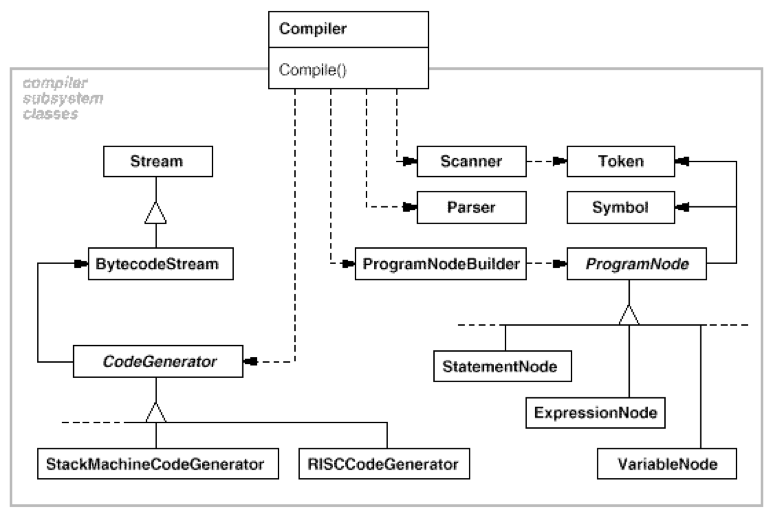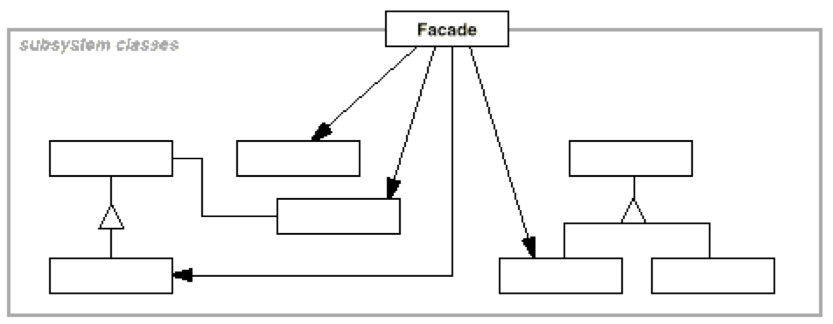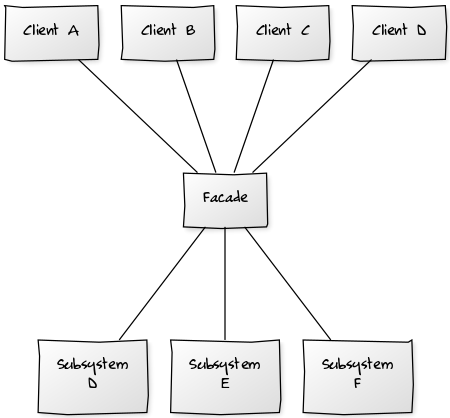Façade
Gamma et al. 95
Intent
Provide a unified interface to a set of interfaces in a subsystem.
Facade defines a higher-level interface that makes the subsystem easier to use.
Motivation
Structuring a system into components/subsystems helps reduce complexity.
A common design goal is to minimize the communication and dependencies between components.
One way to achieve this goal is to introduce a facade object that provides a single, simplified interface to the more general facilities of a component.
Example

Applicability
Use a façade when you want to:
provide a simple interface for a component.
reduce dependency between clients and implementation classes.
Structure

Example

Consequences
Client only need to know one class from the whole subsystem.
Coupling between clients and implementation classes is reduced.
The Façade alone cannot prevent clients from accessing subsystem implementation classes.
Implementation Tradeoffs
Implement the Facade as an abstract class with concrete subclasses for different implementations of a subsystem.
Use concrete subclasses for different implementations of a subsystem.
Author and Date
Design Patterns: Elements of Reusable Object-Oriented Software. Erich Gamma, Richard Helm,Ralph Johnson, and John Vlissides. Addison Wesley. October 1994.
More Examples
javax.faces.context.FacesContext
Façade for
LifeCycle,ViewHandler,NavigationHandlerand many more without that the enduser has to worry about.
javax.faces.context.ExternalContext
Façade for
ServletContext,HttpSession,HttpServletRequest,HttpServletResponse, etc.